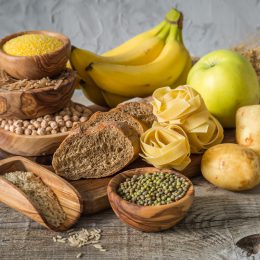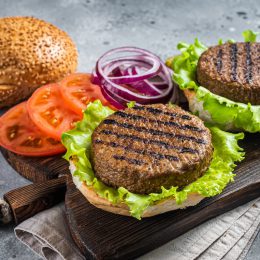The 6 Worst New Year’s Resolutions Nutritionists Hear
Here’s how to redirect a misguided goal for safer, more effective, and lasting results.

Nutrition experts are rarely keen on big, sweeping goals. For lasting results, the changes you make to your diet and overall lifestyle need to be small, specific, and measurable. That’s where New Year’s resolutions tend to fall short. They’re often general, lofty, or worst of all, misdirected.
To help you avoid setting yourself up for disappointment, we asked top dietitians to share real resolutions they’ve heard from clients that make them cringe—and what they’d recommend instead.
1. “I’m Not Going to Eat Out Anymore”
While this may appear to be a great goal, it can actually negatively impact your mental, social, and physical health, says Cordialis Msora-Kasago, R.D., a spokesperson for the Academy of Nutrition and Dietetics.
Dining away from home is often an opportunity to get out of the house and socialize with others. Plus, research shows that people who eat alone consume fewer vegetables, make unhealthier food choices, and suffer greater rates of loneliness than those who share meals with others.
A better approach: Instead of vowing to stay away from your favorite eateries, make your dining experiences pleasurable and healthier by sharing meals and desserts, skipping appetizers and the bread basket, and choosing smaller portion sizes, Msora-Kasago says. More simple ways to upgrade your order:
- Choose roasted, broiled, grilled, baked, and poached foods over fried and breaded foods. This guide to common menu terms can help.
- Request that sauces and dressings be served on the side.
- Limit calorie-dense or sugar-sweetened beverages, including alcohol, sodas, and sweetened teas.
- Remember that it’s okay to not clean your plate. Take leftovers home, and enjoy them later.
2. “I Want to Fit into That Outfit from 5, 10, or 15 Years Ago”
“The problem with this goal is that there are no steps indicating how the person plans to achieve it,” says Dana Hunnes, Ph.D., R.D., a senior dietitian at Ronald Reagan-UCLA Medical Center.
A better plan, says Hunnes: “I would like to healthfully lose one pound per week by incorporating significantly more whole, plant-based foods into my diet, cutting out the refined white starches and high-fat meats, and gradually incorporating more physical activity into my life.”
It may seem like overkill, but the more specific, the better. “We don’t put on 40 pounds of weight in a few weeks, and we shouldn’t expect to healthfully lose 40 pounds in a few weeks,” Hunnes says. “There truly are only a couple of healthy ways to maintain our health and our weight, and these include eating more whole foods, more plants, and increasing our physical activity.”
When it comes to New Year’s resolutions, Hunnes stresses the importance of making them SMART: specific, measurable, achievable, realistic, and timely. “We want our resolutions to turn into lifestyle changes, not fleeting goals,” she says.
If you’re ready to tweak your lifestyle to promote healthy weight loss, give yourself a leg up by checking out this guide to the seven most common weight loss mistakes people over 60 make.
Plus, be sure to check your SilverSneakers eligibility for free access to gyms and fitness classes nationwide.
3. “I’m Going to Do a Cleanse”
“Many say they’ll lose weight by cleansing, but cutting out all foods is an unrealistic goal,” says Sandra J. Arévalo, M.P.H., R.D.N., director of nutrition services and outreach for Montefiore Medical Center’s community programs. “You will lose weight if you stop eating, but once you go back to food, you’ll gain all your weight back. This method is not sustainable.”
Ditch the cleanse, and instead pay more attention to what, how much, and when you’re eating, Arévalo suggests. More specifically, “eat more whole foods that are lower in sugar and fat and higher in dietary fiber, reduce your portions, and eat three meals per day,” she says. “Eating this way, you will possibly end up eating more bulk but fewer calories.” This approach helps with gradual weight loss, which is more likely to be permanent.
Want more tips for cleaning up your diet—without a cleanse? Check out these eight rules that make healthy eating simple, stress-free, and surprisingly affordable.
4. “I’m Going to Stop Eating [Fill in the Blank]”
“A common resolution that grinds my gears is when someone wants to ‘quit’ a particular food, as if it’s akin to smoking,” says Alan Aragon, a California-based nutrition researcher, adding that a common one is sugar.
“The problem with aiming to completely avoid a given food is that a black-and-white, all-or-nothing approach to dieting has been associated with disordered eating, as well as lack of weight control,” Aragon says. “This has been shown repeatedly in research.”
Sticking with the example of sugar, a better alternative is to allow up to 10 percent of your total calories to come from added sugar, he says. “This typically boils down to a single small dessert serving or item per day, which will never make or break anyone.”
5. “I’m Going Gluten-Free”
Going gluten-free for better health is one of the biggest misconceptions related to diet, says Sharon Palmer, R.D.N., author of The Plant-Powered Diet.
Subscribe to our newsletter
It's quick and easy. You could be one of the 13 million people who are eligible.
Already a member? Click to discover our 15,000+ participating locations.
Follow Us
If you have a medical condition, such as celiac disease, you must follow a gluten-free diet, she says. But for everyone else, there’s no real evidence that it’s a healthier diet. “On the contrary, avoiding gluten—found in wheat and related grains such as rye and barley—may actually pose health risks because these foods contain important nutrients and fibers linked with heart health and digestive benefits,” Palmer says. Fiber needs actually increase as you get older, so it’s especially important to fit it into your diet.
Some people report they feel better after giving up gluten, and while they might have been gluten-sensitive, it could also be the result of eating better in general. Often when people stop eating foods with gluten, they end up cutting out a lot of processed and packaged foods, and eating more vegetables and fruit—two food habits that are good for everyone.
If you think you might have celiac disease or gluten sensitivity, or frequently experience digestive distress, talk to your doctor. If he or she suspects a problem with gluten, the first step is a simple blood test, but do not stop eating foods with gluten beforehand because the test won’t work.
And if gluten isn’t the issue, your doctor can help you figure out the problem so you can eat comfortably.
6. “I’m Going to Cut Out Carbs”
“Whenever I hear a patient state that they’re eliminating carbs from their diet, I cringe,” says Keri Gans, R.D.N., author of The Small Change Diet. “But it especially bothers me when a patient older than 65 chooses to do so.”
Healthy carbs, such as 100 percent whole grains, legumes, fruits, and veggies, are packed with fiber. And fiber is so important to help prevent constipation. “Many older adults are more prone to constipation due to medication side effects,” Gans says. “Also, fiber has been to shown to possibly help lower cholesterol levels and promote a healthy heart, which is definitely important as we age.”
So instead of eliminating carbs altogether, Gans suggests learning how to choose healthier ones. One easy way to do it: Cut the white stuff—white bread, white rice, and white pasta. The cleanest carbs are whole grains that have been touched the least by processing and thus retain more nutrients. Opt for whole grains that look most like their just-harvested state: oats, brown rice, quinoa.
Check Your SilverSneakers Eligibility Instantly
SilverSneakers gives you free, unlimited access to more than 15,000 gyms and fitness centers across the nation, plus classes and tools designed to keep older adults strong and independent. Check your eligibility instantly here.





